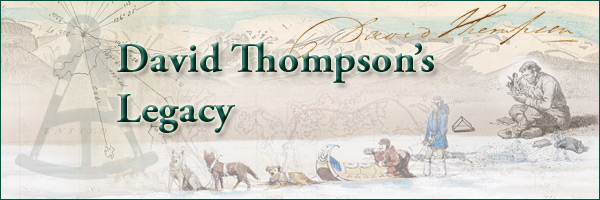
Table of Contents
The Later Years | David Thompson Legacy | Records Held by the Archives of Ontario
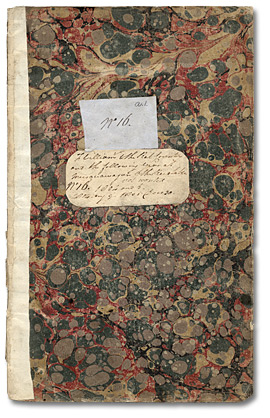
Click to see a larger image (264K)
Exterior cover of Journal #16, 1804-1806
David Thompson’s notebooks and journals
Reference Code: F 443-1
Archives of Ontario
David Thompson left a significant mark on the Canadian landscape – physically and intellectually. His surveys and maps delineated boundaries we live with today. His travels and writings offer an insight into the fur trade, Aboriginal culture and the ecosystems of the West. His vision of a nation that included the vast western territories anticipated modern Canada. His marriage of nearly 60 years to Charlotte Small symbolized the vital role women played as partners in the fur trade. Thompson’s legacy remains an inspiration and a challenge as we commemorate his bicentennial.
While studying under Philip Turnor, Thompson lost the sight in his right eye. He survived numerous accidents, a near fatal case of malaria, debilitating cholera and rheumatism in his leg. Three of their children predeceased David and Charlotte. But deeply held religious beliefs helped Thompson overcome these personal tragedies.
Thompson’s writings remained in the family after his death. The journals were sold by his son Joshua to the government. The Narrative went to a private citizen and was published in 1916. Thompson received belated recognition from the Canadian Government in the form of a plaque erected in 1930 and a commemorative stamp issued in 1957 on the centenary of his death.
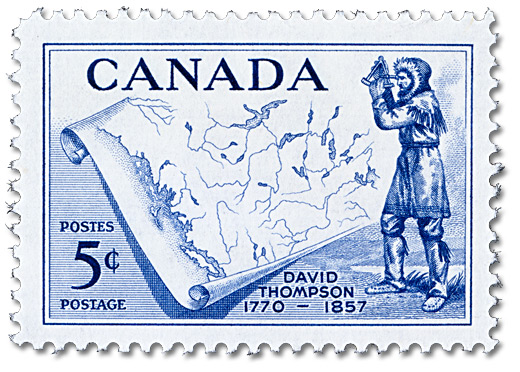
David Thompson (1770-1857), issued 5 June 1957
Designed by George Gundersen, engraved by Yves Baril
Canadian Postal Archives, POS-424
Library and Archives Canada

Thompson’s Narrative was first published by the Champlain Society in 1916 and republished in 1962.
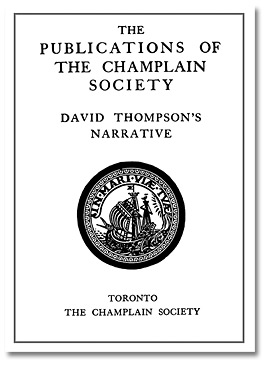
Title page of the 1916 publication of Thompson’s Narrative
edited by J. B. Tyrrell
Courtesy Champlain Society
Thompson’s Narrative of his Explorations in Western Canada, 1784-1812
Edited by J. B. Tyrrell
Toronto: Champlain Society, 1916
971 CHA 12
Archives of Ontario
In 1927 the Historic Sites and Monuments Board of Canada designated Thompson a person of historic importance. The Ontario Government later honoured him with a plaque at his former home in Williamstown.
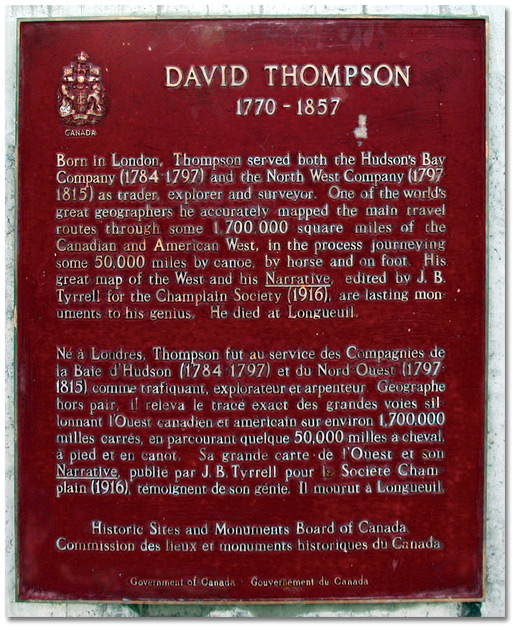
Click to see a larger image (495K)
David Thompson 1770-1857
Historic Sites and Monuments Board of Canada plaque
Parks Canada, 2006
David Thompson’s Family: compiled from family records
Father
David Thompson-
Born 30 April 1770 (London)
Married 10 June 1799
Died 10 February 1857 (Longueuil)
Mother
Charlotte Small-
Born 1 September 1785 (Île-à-la-Crosse)
Married 10 June 1799
Died 4 May 1857
Children (in order eldest to youngest)
Fanny-
Born 10 June 1801 (Rocky Mountain House)
Died 17 May 1884
-
Born 5 March 1804 (Peace River)
Died ?
-
Born 5 March 1806 (Reed Lake House)
Died 22 February 1814 (Terrebonne)
-
Born 25 August 1808 (Boggy Hall)
Died 11 January 1814
-
Born 28 March 1811 (Fort Augustus)
Died ?
-
Born 30 July 1813 (Terrebonne)
Died 23 October 1855
-
Born 7 July 1815 (Terrebonne)
Died ?
-
Born 25 April 1817 (Williamstown)
Died ?
-
Born 9 November 1819 (Williamstown)
Died ?
-
Born 10 July 1822 (Williamstown)
Died ?
-
Born 13 July 1824 (Williamstown)
Died 27 August 1824
-
Born 2 April 1827 (Williamstown)
Died 1906
-
Born 4 March 1829 (Williamstown)
Died ?
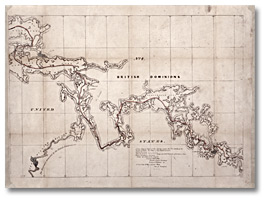
Click to see a larger image (76K)
A true map of the survey under the 7th Article of the
Treaty of Ghent by order of the commissioners, 1826
David Thompson
Reference Code: B-39-04
Archives of Ontario, AO 3700
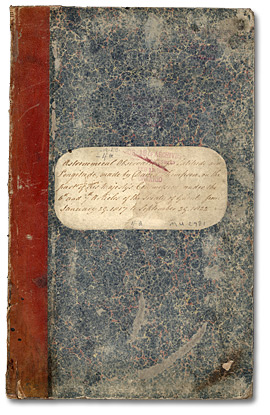
Click to see a larger image (263K)
Exterior cover of Field Book #4a, 1817-1822
David Thompson’s Treaty of Ghent Field Books
Reference Code: F 443-2
Archives of Ontario
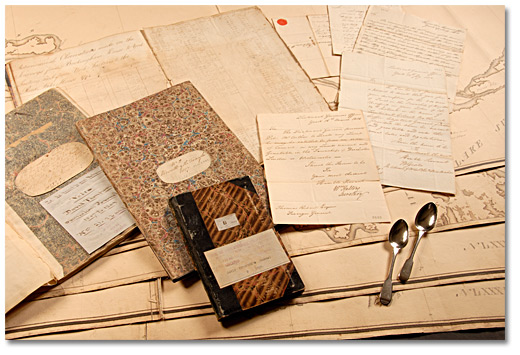
A selection of items from the David Thompson fonds
Carrie McGillivray fonds and Cartographic Records Collection
Archives of Ontario